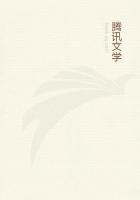PROEM
I wander afield, thriving in sturdy thought, Through unpathed haunts of the Pierides, Trodden by step of none before. I joy To come on undefiled fountains there, To drain them deep; I joy to pluck new flowers, To seek for this my head a signal crown From regions where the Muses never yet Have garlanded the temples of a man:
First, since I teach concerning mighty things, And go right on to loose from round the mind The tightened coils of dread religion;Next, since, concerning themes so dark, I frame Song so pellucid, touching all throughout Even with the Muses' charm- which, as 'twould seem, Is not without a reasonable ground:
For as physicians, when they seek to give Young boys the nauseous wormwood, first do touch The brim around the cup with the sweet juice And yellow of the honey, in order that The thoughtless age of boyhood be cajoled As far as the lips, and meanwhile swallow down The wormwood's bitter draught, and, though befooled, Be yet not merely duped, but rather thus Grow strong again with recreated health:
So now I too (since this my doctrine seems In general somewhat woeful unto those Who've had it not in hand, and since the crowd Starts back from it in horror) have desired To expound our doctrine unto thee in song Soft-speaking and Pierian, and, as 'twere, To touch it with sweet honey of the Muse-If by such method haply I might hold The mind of thee upon these lines of ours, Till thou dost learn the nature of all things And understandest their utility.
EXISTENCE AND CHARACTER OF THE IMAGES
But since I've taught already of what sort The seeds of all things are, and how distinct In divers forms they flit of own accord, Stirred with a motion everlasting on, And in what mode things be from them create, And since I've taught what the mind's nature is, And of what things 'tis with the body knit And thrives in strength, and by what mode uptorn That mind returns to its primordials, Now will I undertake an argument-One for these matters of supreme concern-That there exist those somewhats which we call The images of things: these, like to films Scaled off the utmost outside of the things, Flit hither and thither through the atmosphere, And the same terrify our intellects, Coming upon us waking or in sleep, When oft we peer at wonderful strange shapes And images of people lorn of light, Which oft have horribly roused us when we lay In slumber- that haply nevermore may we Suppose that souls get loose from Acheron, Or shades go floating in among the living, Or aught of us is left behind at death, When body and mind, destroyed together, each Back to its own primordials goes away.
And thus I say that effigies of things, And tenuous shapes from off the things are sent, From off the utmost outside of the things, Which are like films or may be named a rind, Because the image bears like look and form With whatso body has shed it fluttering forth-A fact thou mayst, however dull thy wits, Well learn from this: mainly, because we see Even 'mongst visible objects many be That send forth bodies, loosely some diffused-Like smoke from oaken logs and heat from fires-And some more interwoven and condensed-
As when the locusts in the summertime Put off their glossy tunics, or when calves At birth drop membranes from their body's surface, Or when, again, the slippery serpent doffs Its vestments 'mongst the thorns- for oft we see The breres augmented with their flying spoils:
Since such takes place, 'tis likewise certain too That tenuous images from things are sent, From off the utmost outside of the things.
For why those kinds should drop and part from things, Rather than others tenuous and thin, No power has man to open mouth to tell;Especially, since on outsides of things Are bodies many and minute which could, In the same order which they had before, And with the figure of their form preserved, Be thrown abroad, and much more swiftly too, Being less subject to impediments, As few in number and placed along the front.
For truly many things we see discharge Their stuff at large, not only from their cores Deep-set within, as we have said above, But from their surfaces at times no less-Their very colours too. And commonly The awnings, saffron, red and dusky blue, Stretched overhead in mighty theatres, Upon their poles and cross-beams fluttering, Have such an action quite; for there they dye And make to undulate with their every hue The circled throng below, and all the stage, And rich attire in the patrician seats.
And ever the more the theatre's dark walls Around them shut, the more all things within Laugh in the bright suffusion of strange glints, The daylight being withdrawn. And therefore, since The canvas hangings thus discharge their dye From off their surface, things in general must Likewise their tenuous effigies discharge, Because in either case they are off-thrown From off the surface. So there are indeed Such certain prints and vestiges of forms Which flit around, of subtlest texture made, Invisible, when separate, each and one.
Again, all odour, smoke, and heat, and such Streams out of things diffusedly, because, Whilst coming from the deeps of body forth And rising out, along their bending path They're torn asunder, nor have gateways straight Wherethrough to mass themselves and struggle abroad.
But contrariwise, when such a tenuous film Of outside colour is thrown off, there's naught Can rend it, since 'tis placed along the front Ready to hand. Lastly those images Which to our eyes in mirrors do appear, In water, or in any shining surface, Must be, since furnished with like look of things, Fashioned from images of things sent out.
There are, then, tenuous effigies of forms, Like unto them, which no one can divine When taken singly, which do yet give back, When by continued and recurrent discharge Expelled, a picture from the mirrors' plane.
Nor otherwise, it seems, can they be kept So well conserved that thus be given back Figures so like each object.
Now then, learn How tenuous is the nature of an image.














